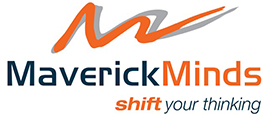Last week in Canberra, something unique happened: experienced facilitators stepped away from leading to become participants in tackling complex Australian Public Service (APS) challenges.
Yellow Edge brought together facilitators and coaches to ‘hack’ three pressing issues. The invitation was simple – collaborate with colleagues to find desirable, feasible, and viable solutions to real capability problems and opportunities identified across the APS.
We began by self-selecting the issue we wanted to explore. Three compelling areas were on offer:
- Conflict in the workplace – its nature and frequency
- Entrepreneurialism and Innovation – barriers to and prioritising
- Workforce Productivity – busy work
Although our main emphasis was on the APS, these challenges often arise in organisational life and deserve our attention. I chose to focus on entrepreneurialism and innovation, drawn by the challenge of fostering a culture of these concepts within government contexts, where the appetite for risk often conflicts with strict systemic structures.
The Hackathon Process: Explore, Design, Reflect
The process, though simple in structure, offered a nonconventional approach to identifying opportunities and navigating constraints within the system. It also served as a potent reminder that even experienced facilitators gain significantly from stepping back into the participant role.
The format took us through a thoughtful and structured design process:
- Explore and Understand the Capability Problem
Explore the issue, present data and perspectives, share stories and lived experiences, and ask curious questions.
- What does entrepreneurialism mean in a public service context?
- What holds it back?
- What encourages it?
- What are the perceived constraints?
- Where is it happening?
- Define the Problem Statement
This stage is deceptively challenging. Why? Because we want to jump into solution mode without fully understanding the issue we are trying to address. And how often does that happen?
Peeling back the layers, we uncovered our assumptions and made them explicit. We asked questions like:
- Is the problem really about a lack of innovation?
- Or is it about fear of failure?
- Or the absence of safe-to-fail environments?
- And what people think entrepreneurialism means about their work and their environment.
- Valuable Feedback
We then had to present our discovery and problem definition to our colleagues, who gave us feedback and other valuable data to work with as we headed into the next stage. Practically, you might consider using this stage to enhance your communication in a broader context, such as with clients and across teams, to gather new information and diverse perspectives.
- Solution Design Phase
Refining our problem definition, we moved into ideation and prototyping and explored:
- How our proposed solution addressed the issue
- The architecture and design of our approach
- The adult learning theories that would underpin the experience
- How did it hold up against desirability, feasibility, and viability
- The barriers and constraints we’d need to navigate
A Collegial Learning Loop
I enjoyed collaborating with my peers, where each of us brought unique experiences and perspectives. This positive environment fostered numerous learning moments as we engaged in hypothesis generation and both divergent and convergent thinking.
It was a collegial atmosphere, and I appreciated hearing different approaches to complex public sector issues. Each insight refined our thinking, challenged our biases, and helped us evolve our ideas.
Most importantly, it highlighted the significance of staying connected to the participant experience amidst ambiguity. It involved deeply listening, contributing, supporting, and learning in real time.
Being a participant reminds you of the struggle with uncertainty, vulnerability, and the value of openly sharing imperfect ideas while collaboratively building something meaningful in a short timeframe.
Final Thoughts
The Yellow Edge Hackathon was a meaningful pause in my practice – a chance to reflect, co-create, and re-energise. It offered more than just a process for capability design; it was a practice ground for curiosity, collaboration, and creativity.
How often do you put yourself into the experience of being a participant? Whatever role you find yourself in, I’d recommend it. If we remain open and curious, it is often the space where we can learn and grow in the most unexpected ways.

